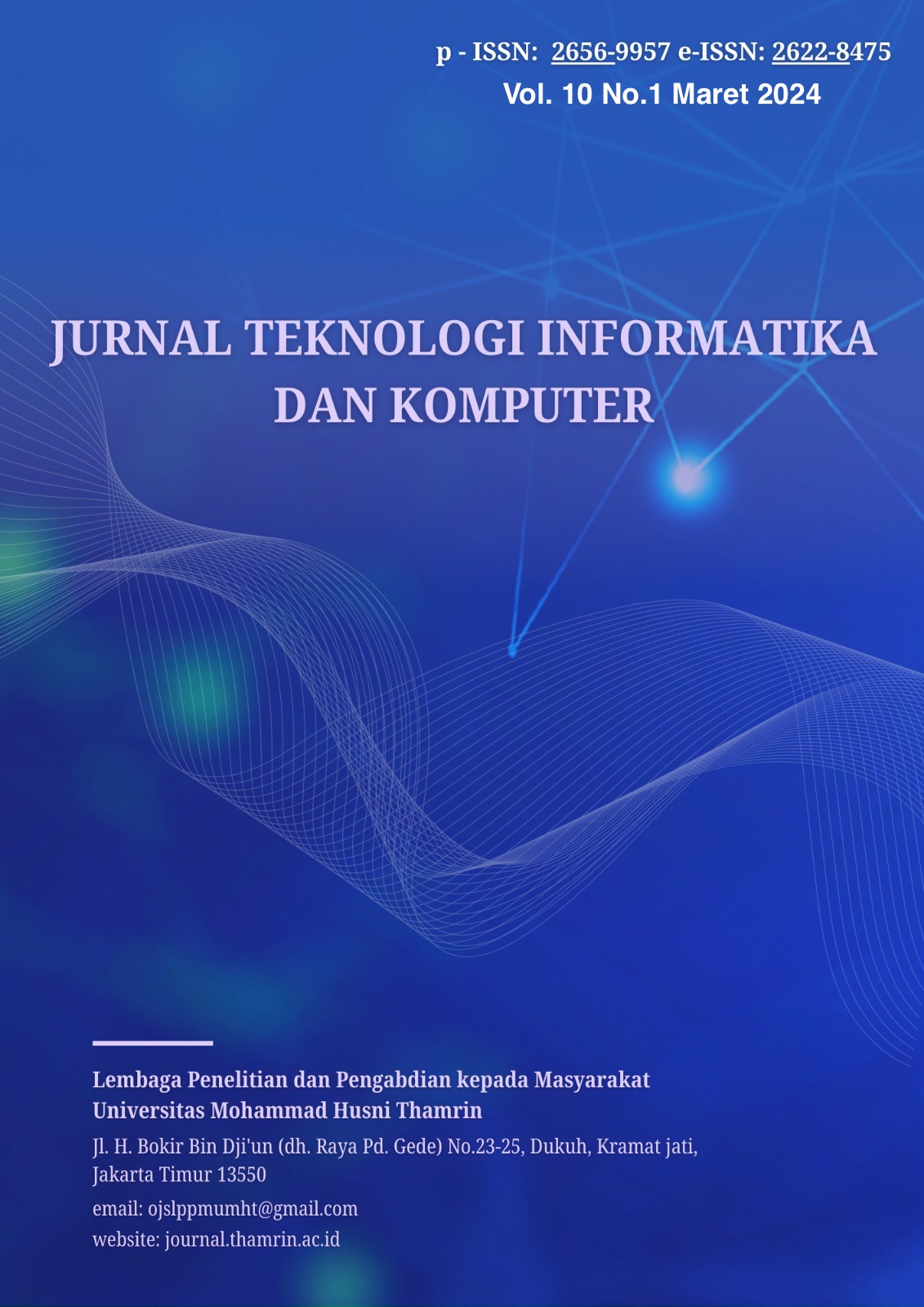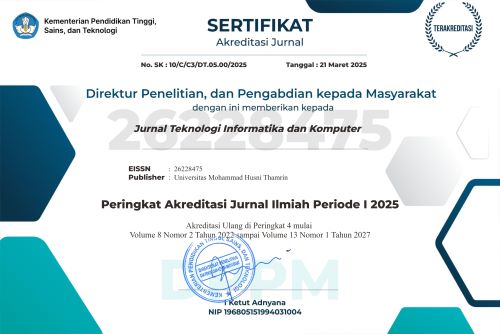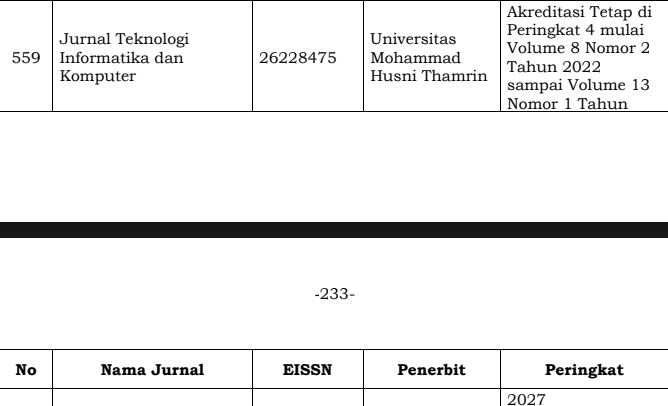Segmentasi Pelanggan Berdasarkan Recency, Frequency, dan Monetary dengan K-Means Clustering: Studi Kasus Toko Pakaian Almost Famous
DOI:
https://doi.org/10.37012/jtik.v10i1.2096Abstract
References
Allegue, S., Abdellatif, T., & Bannour, K. (2020). RFMC: a spending-category segmentation. In 2020 IEEE 17th International Conference on Web and Information Technologies (WETICE) (pp. 165-170). IEEE.
Anitha, P., & Patil, M. M. (2022). RFM model for customer purchase behavior using K-Means algorithm. Journal of King Saud University - Computer and Information Sciences, 34(5).
Ashari, F., Ilham, Nugroho, E., Baraku, R., Yanda, I., & Liwardana, R. (2023). Analysis of Elbow, Silhouette, Davies-Bouldin, Calinski-Harabasz, and Rand-Index Evaluation on K-Means Algorithm for Classifying Flood-Affected Areas in Jakarta. Journal of Applied Informatics and Computing, 7, 89-97. https://doi.org/10.30871/jaic.v7i1.4947
Basri, F. M., Gata, W., & Risnandar. (2020). Analisis loyalitas pelanggan berbasis model recency, frequency, dan monetary (RFM).
Christy, A. J., Umamakeswari, A., Priyatharsini, L., & Neyaa, A. (2021). RFM ranking – An effective approach to customer segmentation. Journal of King Saud University - Computer and Information Sciences, 33(10), 1251-1257.
Febriani, A., & Putri, S. A. (2020). Consumer Segmentation Based on Recency, Frequency, Monetary Models with the K-Means Method. Journal of Industrial Engineering and Management Systems, 13(2), 52-57.
Hastie, T., Tibshirani, R., & Friedman, J. H. (2009). The elements of statistical learning: Data mining, inference, and prediction. Springer.
Hossain, MZ, Akhtar, MN, Ahmad, RB, & ... (2019). A dynamic K-means clustering for data mining. Indonesian Journal of …, squ.elsevierpure.com, https://squ.elsevierpure.com/ar/publications/a-dynamic-k-means-clustering-for-data-mining
Ikotun, A. M., Ezugwu, A. E., Abualigah, L., Abuhaija, B., Heming, J., & Abualigah, L. (2023). K-means clustering algorithms: A comprehensive review, variants analysis, and advances in the era of big data. Information Sciences, 622, 178-210.
Jain, A. K. (2010). Data clustering: 50 years beyond k-means. Pattern Recognition Letters, 31(8), 651-666.
James, G., Witten, D., Hastie, T., & Tibshirani, R. (2013). An introduction to statistical learning (Vol. 112). New York, NY: Springer.
Kotler, P., & Keller, K. L. (2016). Marketing management (15th ed.). New Jersey: Pearson Education.
Rokach, L., & Maimon, O. (Eds.). (2005). Data mining and knowledge discovery handbook. Berlin, Germany: Springer Science & Business Media.
Setiono, A., Triayudi, A., & Handayani, E. T. E. (2023). Analysis of Recency Frequency Monetary and K-Means Clustering in Dental Clinics to Determine Patient Segmentation. JSiI | Jurnal Sistem Informasi, 10(1), 1-6.
Sinaga, K. P., & Yang, M.-S. (2020). Unsupervised K-Means Clustering Algorithm. IEEE Access, 8, 80716-80727.
Downloads
Published
Issue
Section
Citation Check
License
Copyright (c) 2024 Firman Arifianto, Jonlisen Hasudungan, Adamara Muzaky, Harry T.Y. Achsan

This work is licensed under a Creative Commons Attribution 4.0 International License.
Jurnal Teknologi Informatika dan Komputer allows readers to read, download, copy, distribute, print, search, or link to the full texts of its articles and allow readers to use them for any other lawful purpose. The journal allows the author(s) to hold the copyright without restrictions. Finally, the journal allows the author(s) to retain publishing rights without restrictions Authors are allowed to archive their submitted article in an open access repository Authors are allowed to archive the final published article in an open access repository with an acknowledgment of its initial publication in this journal.

Jurnal Teknlogi Informatika dan Komputer is licensed under a Creative Commons Attribution 4.0 International License.












